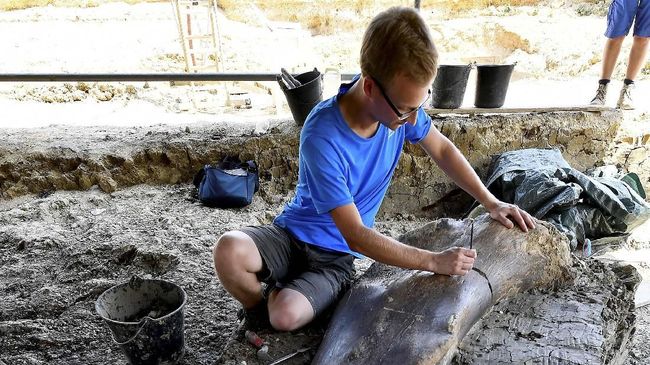Jakarta, CNN Indonesia —
An international team of researchers from Portugal, Denmark and Germany, including Martin Luther Halle-Wittenberg University (MLU) found the fossil dinosaur the first to live in Greenland.
The fossil is called a new species discovered and lived about 214 million years ago. Reported Sci Tech Daily, the fossil found is a two-legged dinosaur, Issi saaneq.
The dinosaur found was a medium-sized, long-necked herbivore and was a precursor to the sauropods, the largest land animals that ever lived.
The new dinosaur’s name refers to the Greenlandic Inuit language and means “cold bone” and the findings have been published in the journal Diversity.
The earliest dinosaur remains, two well-preserved skulls, were first excavated in East Greenland by a paleontologist from Harvard University in 1994.
One of the specimens was originally thought to be of Plateosaurus, a famous long-necked dinosaur that lived in Germany, France, and Switzerland during the Triassic Period.
“It is exciting to find close relatives of the famous Plateosaurus, hundreds of which have been found here in Germany,” said co-author Dr. Oliver Wings of MLU.
The team performed micro-CT scans of the bones, which allowed them to create digital 3D models of the internal structures and bones still covered in sediment.
From these findings, it is known that the two skulls of the so-called new species are juvenile and almost adult individuals. Regardless of size, the differences in bone structure are small and relate only to proportions.
The new Greenland dinosaur is different from all the other sauropodomorphs discovered so far. But they do have similarities with dinosaurs found in Brazil, such as Macrocollum and Unaysaurus, which are nearly 15 million years older.
Together with Plateosaurus from Germany, they formed a group of plateosaurids that had relatively graceful bipeds that reached 3 to 10 meters in length.
“The anatomy of the two skulls is unique in many ways, for example in the shape and proportions of the bones. This specimen certainly belongs to a new species,” said lead author Victor Beccari, who conducted the analysis at NOVA University Lisbon.
This dinosaur that lived in Greenland is thought to have lived about 214 million years ago during the Late Triassic Period. It was at this time that the supercontinent Pangea broke up and the Atlantic Ocean began to form.
“At that time, the Earth was undergoing a climate change that allowed the first plant-eating dinosaurs to reach Europe and beyond,” explains Professor Lars Clemmensen from the University of Copenhagen.
This new find of dinosaur fossils in Greenland is the first evidence of a distinct species, which not only adds to the diversity of dinosaurs from the Late Triassic (235-201 million years ago).
After this scientific work is completed, the dinosaur fossil will be transferred to the Danish Museum of Natural History.
(ttf)
– .


